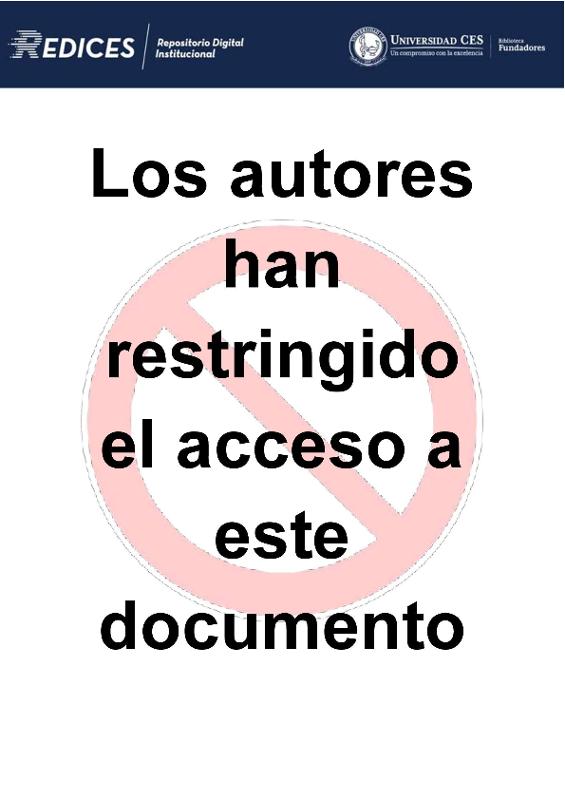Mostrar el registro sencillo del ítem
A clinical practice guideline for the prevention and treatment of peri-implant diseases.
| dc.contributor | Villegas Giraldo, Alejandro | |
| dc.contributor.author | Marín Jaramillo, Rubiel Antonio | |
| dc.date.accessioned | 2018-10-23T21:37:21Z | |
| dc.date.available | 2018-10-23T21:37:21Z | |
| dc.date.issued | 2017-11 | |
| dc.identifier.other | T617.632 M337 | |
| dc.identifier.uri | http://hdl.handle.net/10946/3203 | |
| dc.description.abstract | The incidence of peri-implant diseases is high, and their optimal management is still debated. Purpose: To explore the levels of available evidence and to suggest evidencebased recommendations for the treatment of peri-implant mucositis and periimplantitis. Materials and methods: A clinical practice guideline has been developed using the Scottish Intercollegiate Guidelines Network (SIGN) criteria. A search strategy was formulated, and a critical review of the following evidence was performed: 1) prevention of peri-implant diseases, 2) treatment of peri-implant mucositis, and 3) treatment of peri-implantitis. Systematic reviews and randomized controlled clinical trials were the primary literature types identified. Current levels of evidence were established, and recommendations were determined. Results: A total of 67 articles were included. Regarding the prevention of periimplant diseases, there is strong evidence for the involvement of patients in a regular maintenance program according to their risk profile. Regarding the treatment of peri-implant mucositis, infection control measures are recommended, controversy exists over the usefulness of antimicrobial agents, and there is evidence against the use of antibiotics. Selection of the peri-implantitis treatment method depends on the severity of the condition and patient-related factors. Resective and regenerative therapies may be used for treatment. The use of systemic antibiotics favors the response of clinical parameters. There is conditional evidence for the use of other adjunctive therapies. Conclusions: The best way to prevent peri-implantitis is to prevent peri-implant mucositis through adherence to supportive periodontal therapy. Treatment of periimplant diseases depends on local and systemic conditions that affect the success of other treatment options. | spa |
| dc.language.iso | en | spa |
| dc.publisher | Universidad CES | spa |
| dc.subject | Facultad de Medicina - Maestría en Ciencias Odontológicas | spa |
| dc.subject | Implantes mentales | spa |
| dc.subject | Perimplantitis | spa |
| dc.title | A clinical practice guideline for the prevention and treatment of peri-implant diseases. | spa |
| dc.type | Artículo de revista | spa |
| dc.rights.license | Restringido | spa |
| dc.educationLevel | Maestría | spa |
| dc.contributor.role | Asesor | spa |



